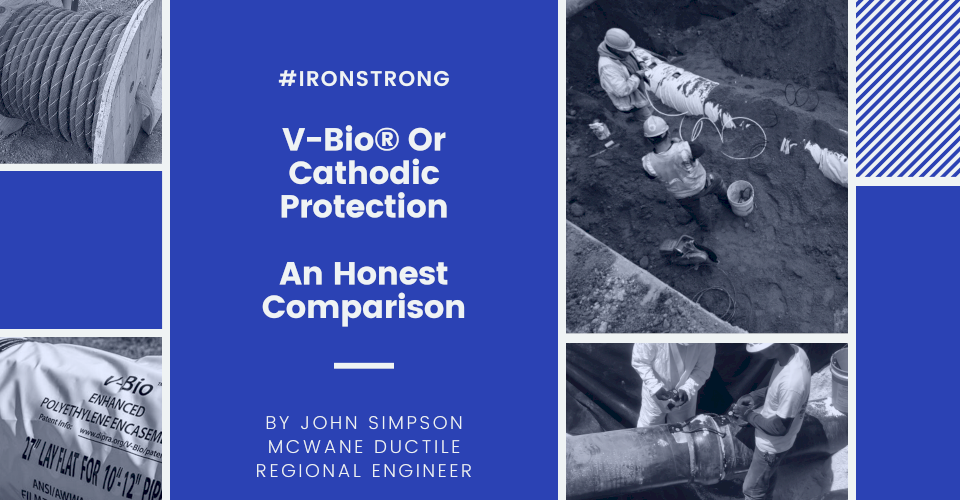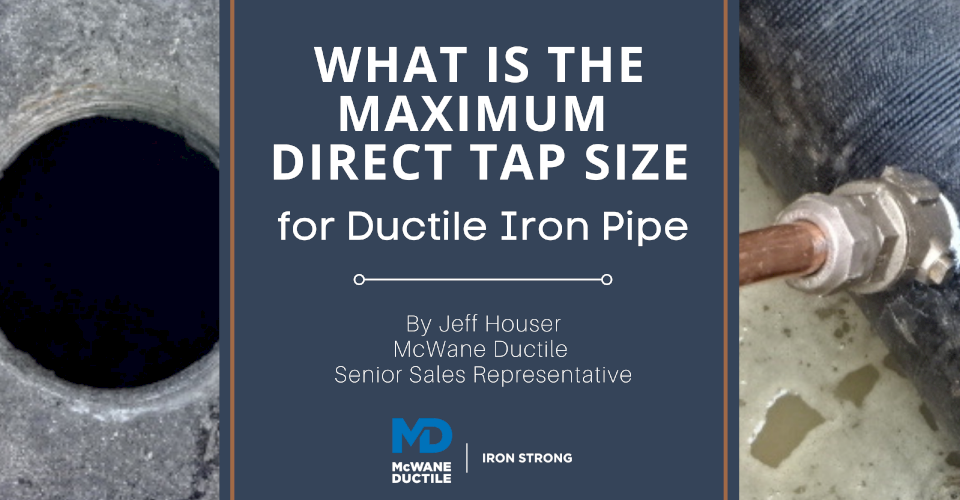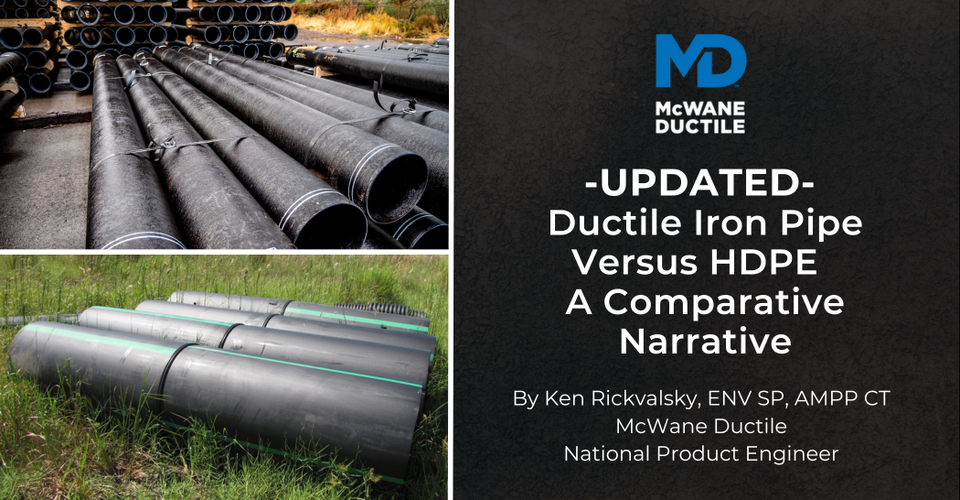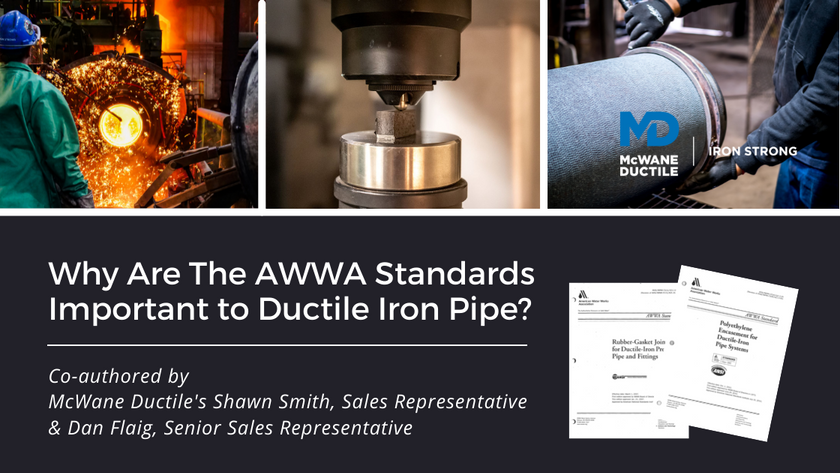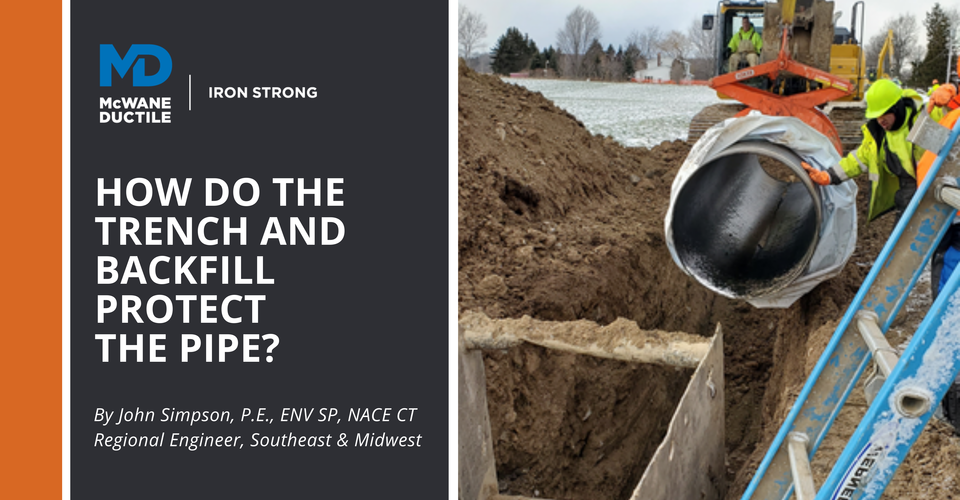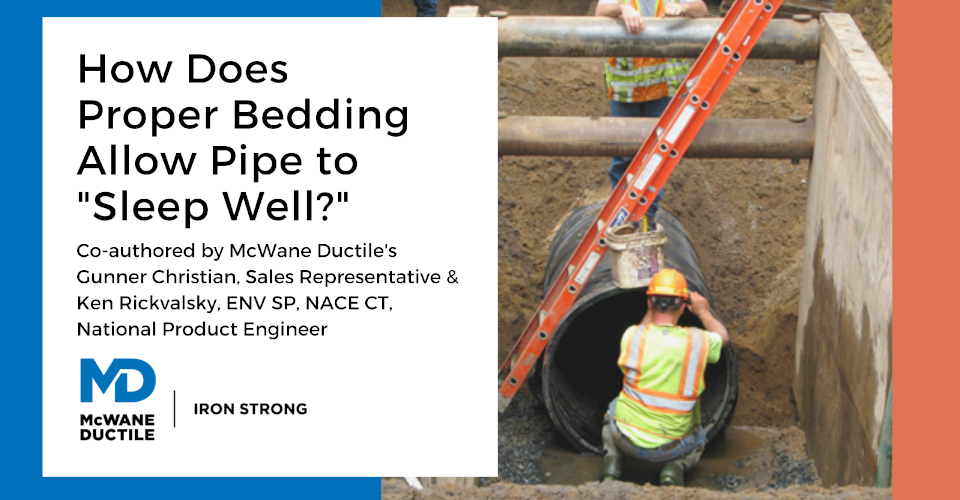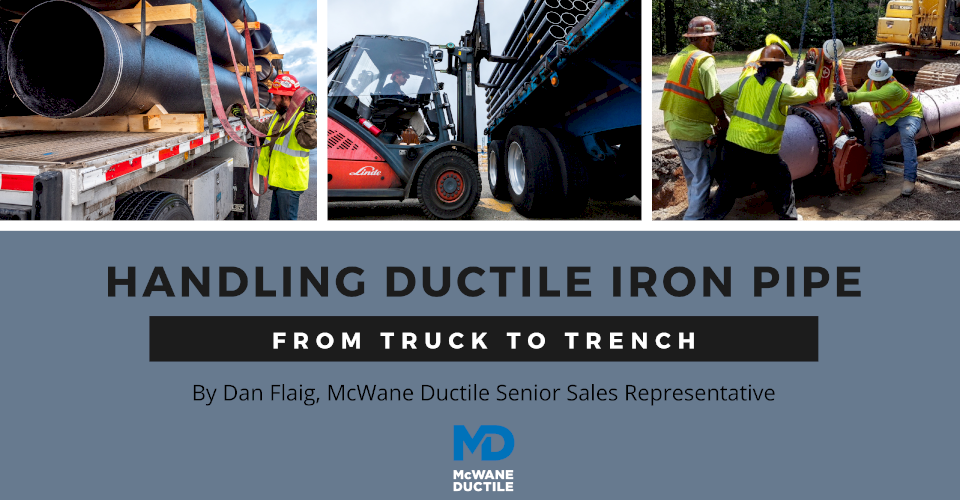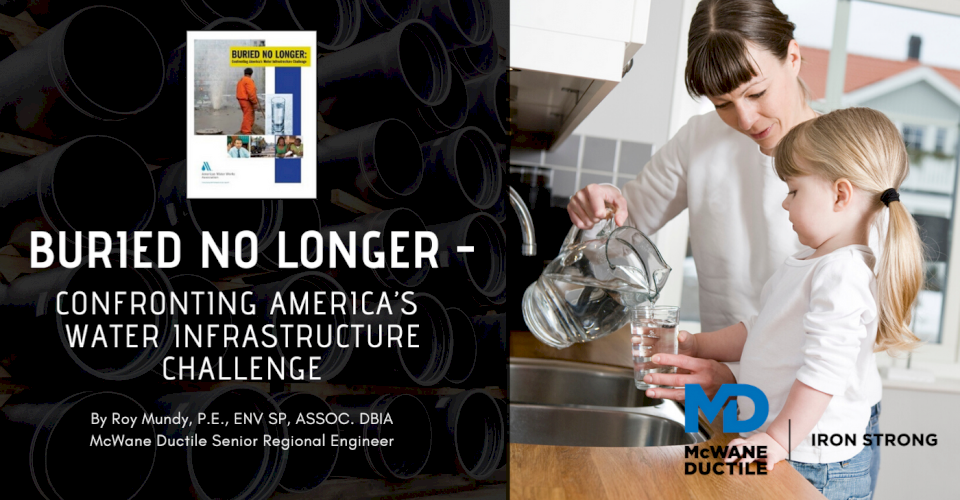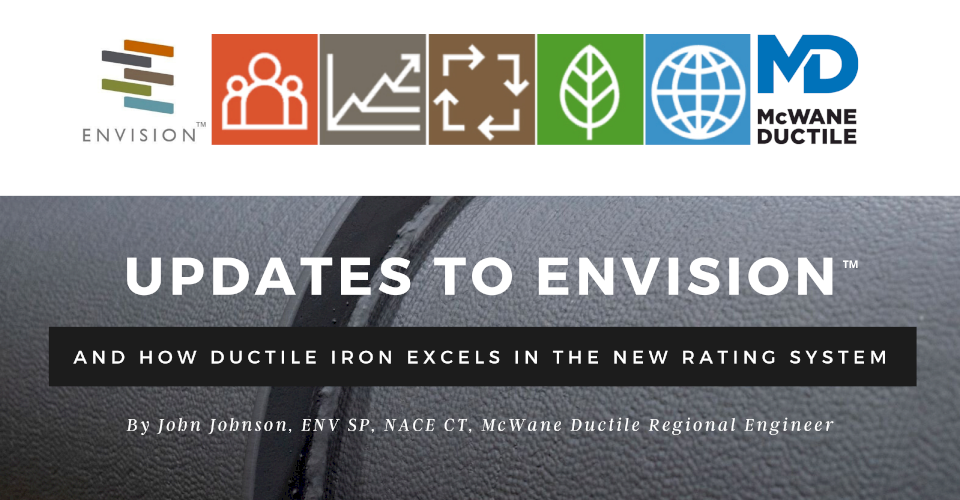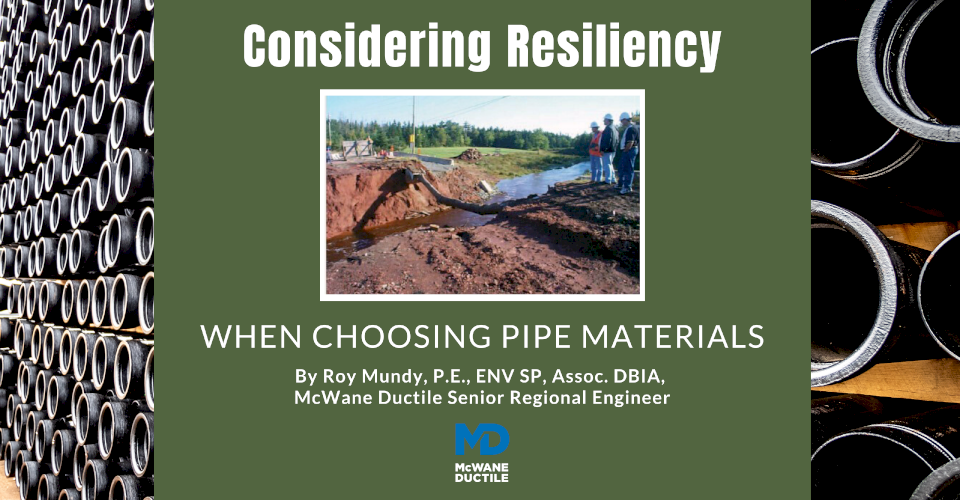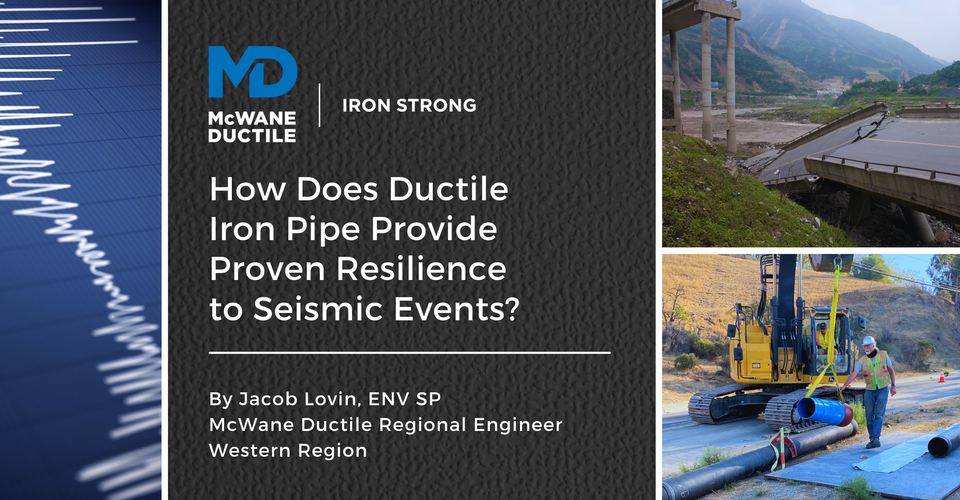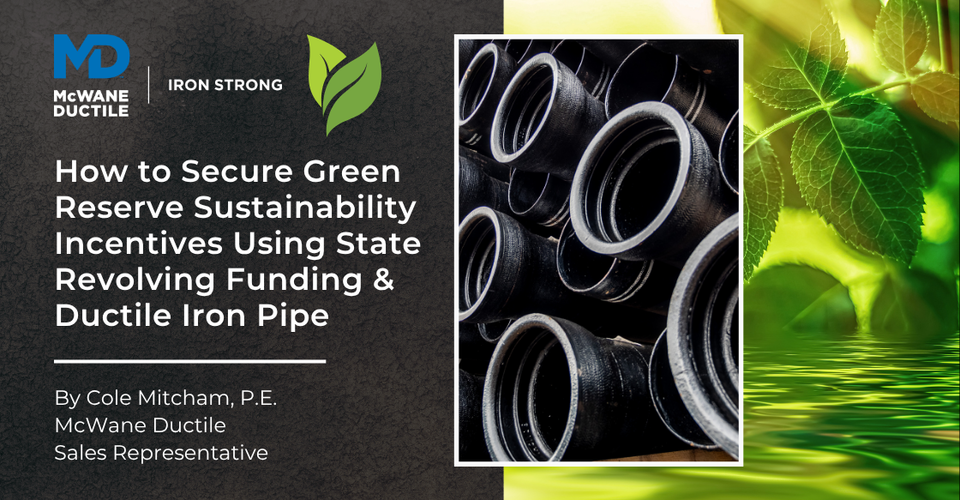-
V-Bio® Or Cathodic Protection – An Honest Comparison
12/13/2019 In Installation Products TechnicalOdds are you may not be a certified corrosion specialist or an expert in the corrosion field for that matter. Most engineers that are responsible for specifying water projects are not. There are of course engineers who dedicate their entire careers to the subject. The good news is that McWane Ductile is committed to excellence in the corrosion field and provides professionals to assist you with making sound decisions regarding corrosion control.
-
What is the Maximum Direct Tap Size for Ductile Iron Pipe?
09/10/2020 In Installation TechnicalWith Ductile iron pipe (DI pipe), typical service taps can be installed directly into the wall of the pipe, which is called “direct tapping.” The ability to use direct tapping eliminates the need for tapping saddles. And the ease at which DI pipe can be "hot tapped" helps avoid the issue of unhappy consumers because their service and pressure are not impacted by the addition of a new tap. The waterworks community frequently asks us, “How big of a tap will DI pipe allow?” The simple, most conservative response, not having interrogated the user as to their DI pipeline particulars, would be as follows:
-
UPDATED - Ductile Iron Pipe Versus HDPE - A Comparative Narrative
05/29/2025 In Comparisons Products TechnicalSelecting the right pipe material is essential for the longevity and success of any water infrastructure project. While Ductile iron pipe (DI pipe) and High-Density Polyethylene (HDPE) each offer distinct benefits, their differences in strength, performance, and long-term cost are significant. This article serves as a refresh of our previously published article in November 2019. It outlines key comparisons to help engineers and specifiers make informed decisions based on project-specific conditions, such as soil type, pressure, and environmental factors.
-
Why Are the AWWA Standards Important to Ductile Iron Pipe?
10/14/2022 In Products TechnicalHave you ever wondered what’s behind the AWWA standards? What do they mean? And why do we need them? They’re listed all the time in specifications, mysterious numbers on plans. Have you ever reviewed them to know why they are important for working with Ductile iron pipe (DI pipe)? In this Iron Strong Blog, we will briefly cover some of the applicable standards for DI pipe and how they help you complete your job safely, successfully, and on time.
-
How Do the Trench and Backfill Protect the Pipe?
12/02/2021 In Installation TechnicalUtility pipelines provide for some of the most basic needs within our society. Essential services, such as supplying potable drinking water to our homes and businesses or sending wastewater away, are possible because of a network of buried pipelines. Whatever pipeline materials are used, they are expected to meet minimum service qualities such as withstanding leakage. This resiliency to leakage eliminates waste of our precious drinking water and prevents polluted soils from wastewater in the pipeline's proximity.
-
How Does Proper Bedding Allow a Pipe to “Sleep Well?"
01/22/2021 In Installation TechnicalDid you know the mattress industry is one of the oldest continuous industries in the world? The first mattresses were believed to have been manufactured in 37 BC in Persia. Today, more than 35 million mattresses are shipped world-wide to replace those that have been in service for an average of seven years. So, what does this have to do with Ductile iron pipe (DI pipe), you ask? This article will discuss how setting improper bedding in a pipe trench can cause sleepless nights for the water company and its crews due to pipe failures, seemingly always at night — as it is my experience that most large main breaks typically occur after dark!
-
Handling Ductile Iron Pipe: From Truck to Trench
09/12/2020 In Installation TechnicalAt McWane Ductile, we are proud to manufacture the strongest, most durable, and most flexible piping material available to the waterworks industry. Even with these great attributes, we still take great care when handling Ductile iron pipe (DI pipe). In this Iron Strong Blog, we’ll cover some key tips to safely handling your DI pipe once it arrives at your job site and throughout the construction or your pipeline project.
-
Buried No Longer - Confronting America’s Water Infrastructure Challenge
03/25/2020 In Installation TechnicalThe American Water Works Association (AWWA) is the premier trade association representing the drinking water industry in the United States. Through its network of paid professionals and volunteers throughout the country, AWWA has provided the drinking water industry with standards for water system operations as well as valuable research on countless subjects for many decades.
-
Updates to Envision® and How Ductile Iron Excels in The New Rating System
07/23/2020 In Environmental & Safety Installation ProductsThis Blog Reflects Significant Updates for Envision Manual V3. As we know, America's infrastructure is in crisis! According to the American Society of Civil Engineers, the estimated investment needed is $1 Trillion over the next 25 years for underground water infrastructure. This investment, as well as the ever-increasing cost of electricity, limited water supply, ever-decreasing natural resources, and environmental concerns, are driving the need for change. Change on how infrastructure is designed and constructed – utilizing more sustainable design and construction practices. ENVISION is designed to provide guidelines for these changes to North American infrastructure. In short, it is a rating system approach very similar to LEED Building Certification; however, with the focus on infrastructure.
Envision not only asks, ‘Are we doing the project right?’ but also, ‘Are we doing the right project?’
-
Considering Resiliency When Choosing Pipe Materials
07/01/2020 In Environmental & Safety InstallationIn this third installment about Sustainability and Resiliency for our Iron Strong Blog, we are focusing on the resiliency of pipe and pipelines as a result of natural disasters such as storms, floods, and wildfires. While earthquakes and seismic events also need to be considered, much has been written on those aspects and we will discuss them in our next installment. Resiliency means many different things to many different people, and its definition is often a matter of perspective and need. Put simply, resiliency is the ability to survive, resist, or recover from damage due to some external hazard.
Latest Posts
- Developing an Asset Management Plan for Your Future Utility or Engineering Organization 12/04/2025 In Comparisons Industry
- Can Joining Water Works Industry Organizations Help You Grow Professionally? 10/21/2025 In Careers WaterWorks
- How Does Ductile Iron Pipe Provide Proven Resilience to Seismic Events? 09/04/2025 In Products Resiliency Technical
- How to Secure Green Reserve Sustainability Incentives Using State Revolving Funding & Ductile Iron Pipe 07/29/2025 In Energy Products Technical

